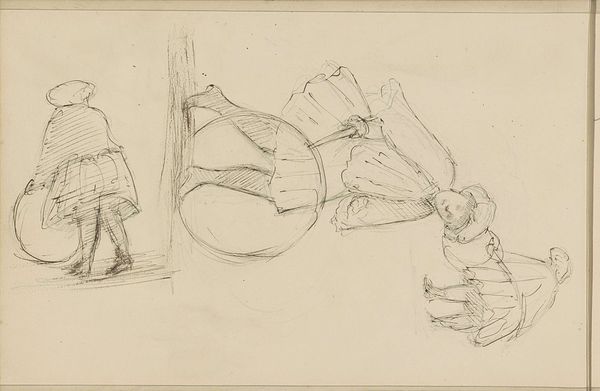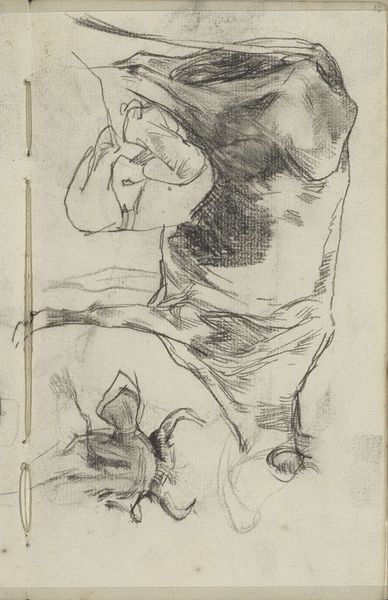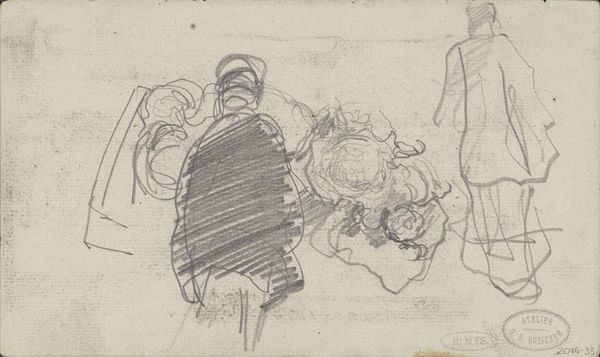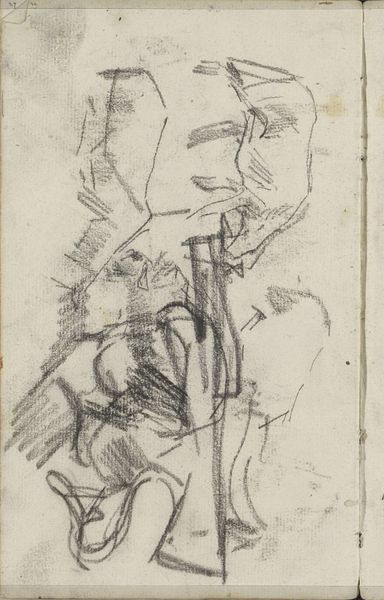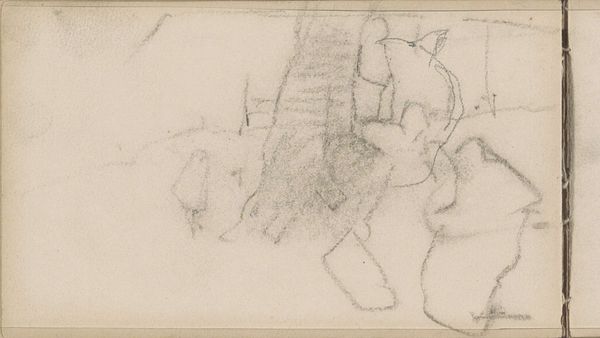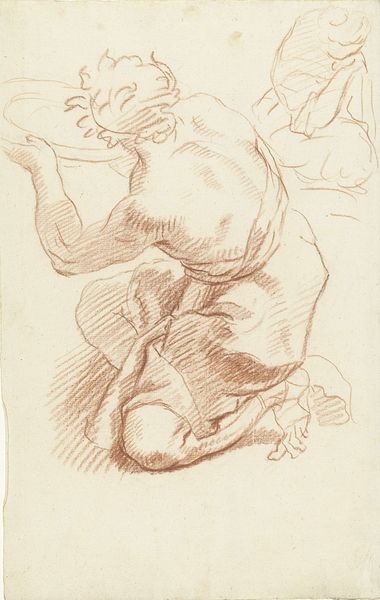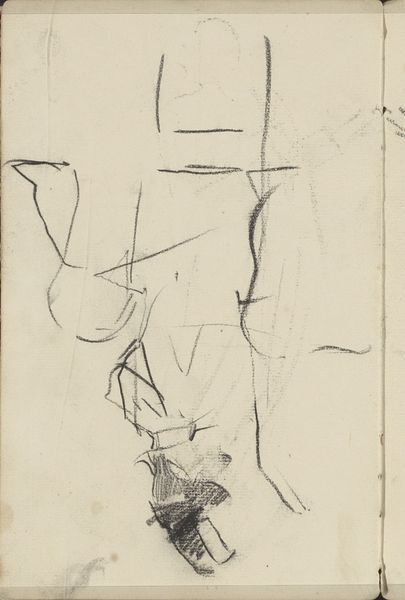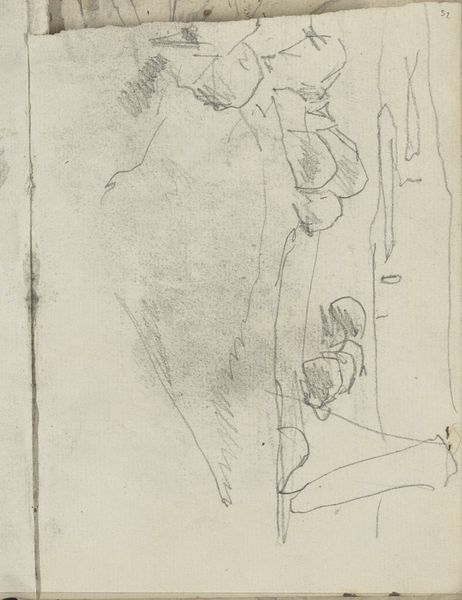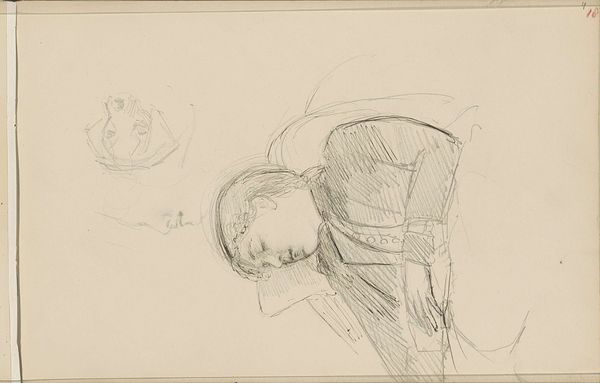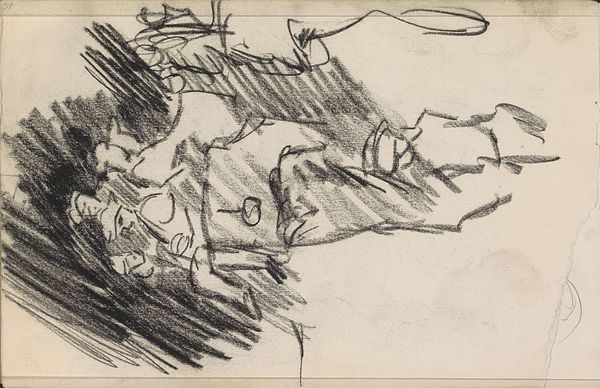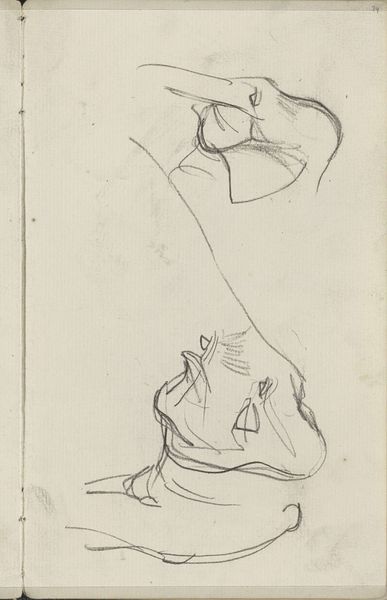
drawing
#
drawing
#
german-expressionism
#
figuration
#
expressionism
#
nude
Copyright: Public Domain: Artvee
Curator: Lovis Corinth created this piece, "Gefesselte Figur," which translates to "Bound Figure," in 1920. It's rendered with the expressive energy characteristic of German Expressionism, using drawing as its medium. Editor: The immediate impact is one of struggle. The angular lines and shadowy strokes communicate intense distress and confinement. What strikes me most is how the figure is so contorted. Curator: Let’s examine that material context. The economic and social upheavals after World War I deeply affected artists like Corinth. He, among other German artists, sought to reflect on, process, and convey the psychological tolls and palpable social burdens within this war torn climate, not merely on an individual level. Here, he employs a seemingly quick drawing—notice the visible sketches—to echo the urgent needs and immediacy of capturing emotion during this tumultuous moment. Editor: The beauty of the drawing resides, ironically, in its ugliness. The rough lines and shading aren’t about aesthetics, they're about raw emotion. Look how the light struggles to define the form; there is an emotional density. Also, there are few curved lines here. The hard edges speak to trauma and despair, and these details pull me toward philosophical readings of angst and the subconscious. Curator: We could certainly interpret this as personal angst; yet, it’s relevant to the social discourse of labor under duress. Expressionist artists often aimed to disrupt established modes of representation, embracing raw and direct expression. By displaying the raw physicality of labor and bondage in drawing, Corinth creates access to experiences lived during those times. The act of making the artwork itself can be seen as a way to resist established norms. Editor: I see the value in that view, especially with his aggressive style of portraying figures with distortion, as the formal disruption adds a symbolic, visual layer of discomfort. It does offer a sharp perspective to consider as we engage with his approach to his subject. Curator: Thinking about Corinth's "Gefesselte Figur" and the circumstances under which it was conceived reveals it as a material reflection on postwar struggles, echoing far beyond one figure, one artist. Editor: For me, considering those turbulent postwar feelings adds more weight to appreciating Corinth’s talent in bringing this tortured image to life. Thank you for providing a great additional context, this truly enriches its already formidable visual and philosophical intensity.
Comments
No comments
Be the first to comment and join the conversation on the ultimate creative platform.

